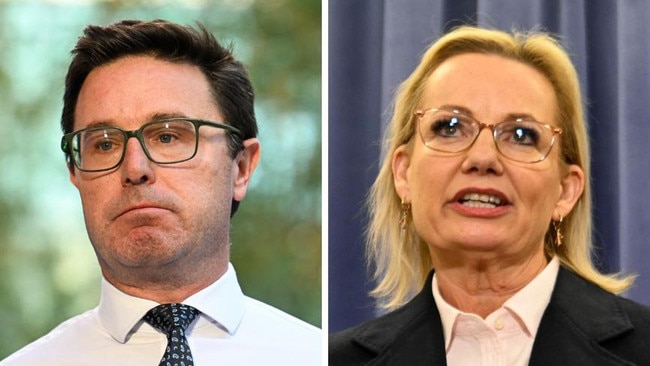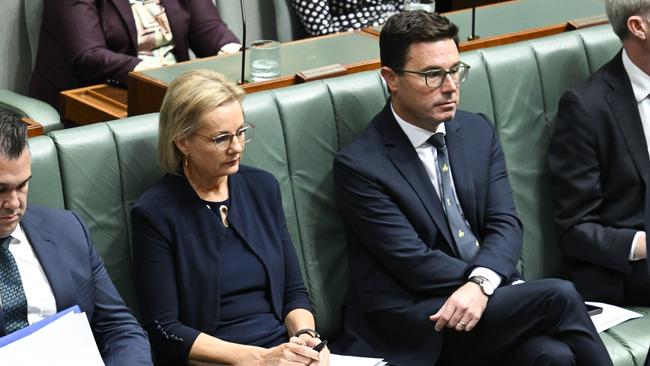
Until the Sussan Ley-led Liberal Party and the David Littleproud-led Nationals attempted a kiss-and-makeup pause, which took place around lunchtime on Thursday, both parties were heading for a lose-lose outcome.
The fact is the previous leaders of both entities understood more than a century ago that the political conservatives in metropolitan areas had to collaborate with like-minded conservatives in rural and regional areas.
That’s how it came about that, in 1918, preferential voting was introduced at the federal level by the Nationalist Party (a forerunner of the current Liberal Party) led by William Morris (Billy) Hughes.
There was a by-election in the West Australian seat of Swan in October 1918. Labor won with 34.4 per cent of the primary vote. The main rural party scored 31.4 per cent and the Nationalists attained 29.6 per cent. So, Labor won Swan despite the fact it scored a third of the primary vote.

Preferential voting was legislated by the Nationalists in December 1918 before there was a by-election for Corangamite in Victoria. This time the Labor candidate scored 42.5 per cent of first preferences but did not win. William Gibson, the Victorian Farmers Union candidate, prevailed on the back of Nationalists preferences.
In the period up to World War I in 1914, there was a steady growth in rural organisations – some of which had a political direction. In his 1966 book The Formation of the Australian Country Parties, BD Graham wrote: “Taking an overall view, an interested observer of the Australia of 1914 could have discovered the first outlines of the (Country) party.”
The gradual move towards the formation of rural parties received an impetus during the war. The outbreak of hostilities made it possible for the commonwealth to gain greater control over farming, including marketing. Consequently, various rural organisations became increasingly involved in the governmental process at the federal level. At the December 1919 election, rural parties attained more than 9 per cent of the primary vote, winning 11 seats. The Nationalists maintained a majority of seats in the House of Representatives but lost this in 1922.
In January 1920, the Australian Country Party was officially formed under the leadership of Tasmanian William James McWilliams. He was replaced by Earle Page in April 1921.
After the 1922 election, the Country Party joined with the Nationalists to form a government with Stanley Melbourne Bruce (who replaced Hughes) as prime minister. Page was the treasurer and second in line behind Bruce in the Nationalist-Country Coalition.
From early 1923 until late 1929 (when the James Scullin-led Labor Party won the election) the Bruce-Page Coalition government remained in place. At the December 1931 election, the United Australia Party (which had replaced the Nationalists) under the leadership of Joseph Lyons came to office. Lyons, who attained majority government for the UAP, offered the Country Party a coalition arrangement but it declined.
It was reinstated after the 1934 election and remained in operation when Robert Menzies became prime minister on the death of Lyons in April 1939. Labor under John Curtin came to office in October 1941 and presided over a significant victory in 1943. Curtin died in office in July 1945 and Ben Chifley led Labor to victory in 1946. Menzies formed the Liberal Party in late 1944 (replacing the UAP). When he became prime minister in 1949, he established a Liberal-Country Party coalition – which remained in place until December 1972. Menzies retired in January 1966.
Only four Liberal Party leaders have won office from opposition – Menzies in 1949, Malcolm Fraser in 1975, John Howard in 1996 and Tony Abbott in 2013. All of this quartet strongly supported a Coalition government. Menzies, Fraser and Howard won 14 elections between them. In time, the Country Party became the National Country Party, then the National Party and now the Nationals. But it is the same entity.
Menzies, Fraser, Howard and Abbott were successful Liberals but all four knew the importance of the Country Party, in its various forms, to their success. Likewise, Country Party/Nationals leaders in the modern era such as Arthur Fadden, John McEwen, Doug Anthony, Tim Fischer and John Anderson understood the importance of the Liberals. Sure, the Liberal Party had its worst defeat on May 3, but not quite as bad as the UAP in 1943. The Nationals did well compared with the Liberals. But not that well.
The Littleproud-led Nationals failed to win back Calare after Andrew Gee quit the party in 2023 and ran as an independent. Moreover, on my count, at the May 3 election there were swings against the Nationals in nine seats – including Littleproud’s seat of Maranoa.
Then there is the able Bridget McKenzie, leader of the Nationals in the Senate. She won her Senate seat in Victoria in 2010, 2016 and 2022 on a joint Liberal Party-Nationals ticket. It is unlikely the Nationals would win a Senate seat in Victoria standing alone.
In the current inner-party discussions there is one thing Ley and Littleproud have in common. It’s called time. After such a devastating defeat, not many Australians will be focused on the Liberals and Nationals for at least 2½ years (until the lead-up to the 2028 election). Apart, that is, from how Liberals and Nationals vote in the Senate, where both share the balance of power along with the Greens when parliament resumes in July.
There is no hurry to confirm Coalition agreements or choose shadow ministers. The Coalition broke up after Labor’s victory in December 1972 but was repaired by mid-1974. There was a further break in 1987 at the time of the Queensland Nationals’ premier Joh Bjelke-Petersen “Joh for PM” madness. This extended the life of the Hawke-Keating Labor government. The Coalition under Howard led in the polls in late 1986 but lost the July 1987 election and took years to recover.
Howard’s message to The Australian’s Simon Benson and Sarah Elks last week was direct. Namely, “the best interests of the two parties is served by being in coalition”. And this has been the case since the early 20th century. This is a precedent for Ley.



